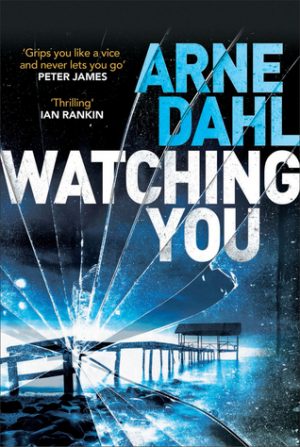
Berger focuses on the anonymous tip that led to the raid in the first place, and identifies the mysterious caller as the same woman with a bicycle who shows up at the other missing children scenes, Natalie Freden. When they face off in the interrogation room, Dahl displays his flair for concise, penetrating dialogue. Amid her non-committal, evasive answers, Berger searches her facial expressions for a tell. He is certain the cool mystery woman knows a lot more about the killer than she’s saying, and the parley between them across the table is one of the most intriguing scenes.
Not only is Natalie Freden unfazed during her grilling, but a background check suggests she’s using an assumed identity. Freden’s intractability and her uncertain link to the monster who is snatching children make Berger very angry. Whatever their game, somebody is toying with the cops by proxy. It soon becomes clear that the culprit, who leaves behind tiny, precision-made watch cogs at the crime scenes, is sending a special message to Berger himself.
He thinks he knows who the killer is, and, you guessed it, it’s very, very personal. The puzzling thing is that he is keeping the investigation to himself, systematically pocketing evidence, leaving even his partner Deer out of it. The next time Berger has another sit-down with Natalie Freden, you are led to believe clarity is on the horizon. But just then, Dahl flips the script 180 degrees, forcing you to re-evaluate everything you’ve read up to this point. The riveting roller coaster ride of a thriller suddenly morphs into a Möbius strip of mystery, where hero becomes villain and hunter becomes hunted. A dizzying series of role-reversals and increasingly regressive glimpses into Berger’s past tease out their significance layer by layer, while an unseen hand manipulates events one cog at a time.
Recurrent flashbacks of a youthful run through an overgrown field, an abandoned shack and scenes of childhood cruelty lend a lyrical urgency to events. As their significance begins to coalesce, you can make your guess where things are leading. But Dahl shames you for your complacency and pulls the carpet out from under you once again, in terms of what you think you know about the victims, the killer and even the detective himself.
The premise is wildly far-fetched, and the human cruelty displayed, while not gratuitous, will make you blanch. But if you like intricate tightly-woven plots and quite a few action scenes, you can sit back and enjoy the ride as Dahl’s sure hand keeps things coherent despite their complexity. And just to prove it, Dahl doubles down and reveals yet another aspect – a shadow agency hovering over the proceedings, a dark ops agency with its own agenda with regards to the victims, which now number seven in all.
As the victims multiply, all with the same MO, Berger joins cause with the most unlikely partner to catch the killer, and hopefully find the young women still alive. Every step closer takes him back to his own traumatic past.
Fans of the Scandinavian television series The Bridge will find this thriller has all the darkness and twice the suspense, featuring a flawed dynamic duo, twists and turns, and an ending that suggests more to come in this auspicious new series.
We’ve talked to the author in the past about his favourite classic crime novels, and we’ve reviewed two books from his Intercrime series. Our favourite Swedish crime novel of 2016 was The Dying Detective and it’s worth checking out.
Harvill Secker
Print/Kindle/iBook
£7.99
CFL Rating: 4 Stars
